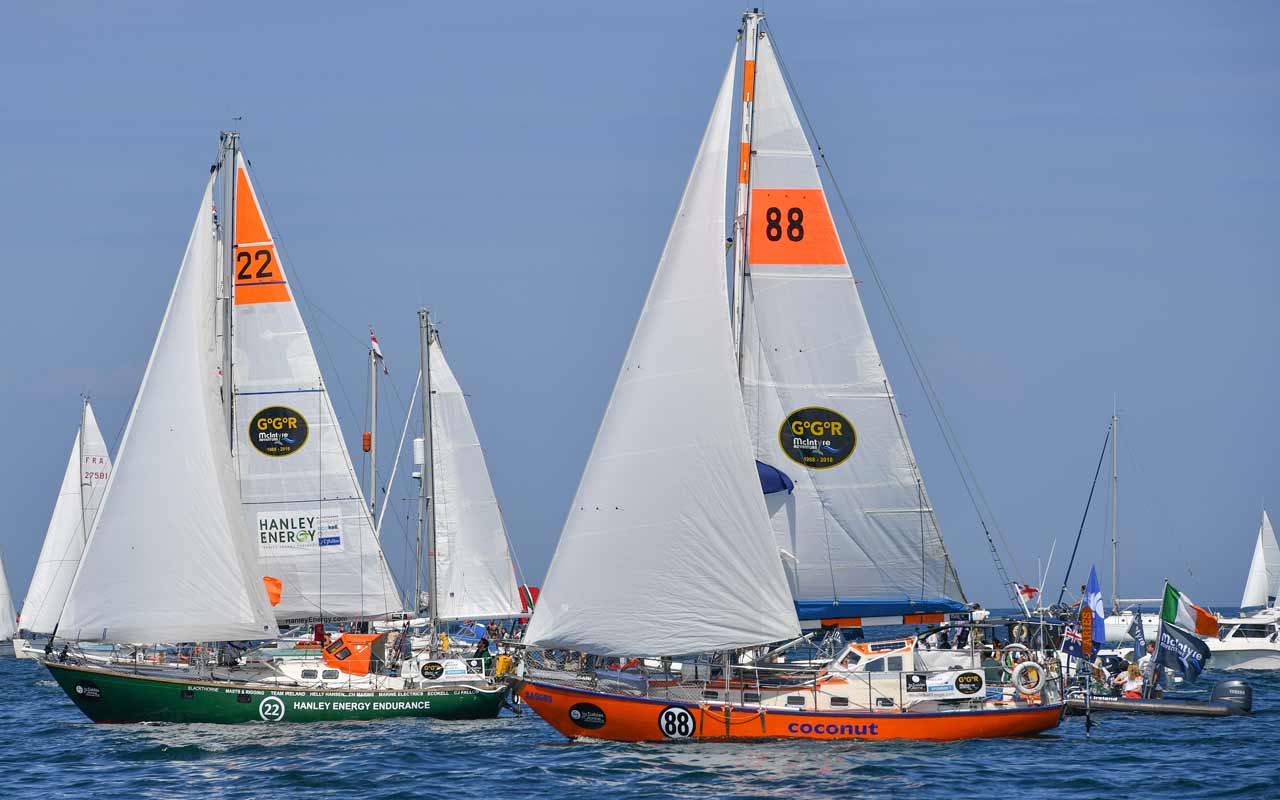
Crossing the Atlantic in a sailboat: the most famous crossings
Sailing the Atlantic in a sailboat is a feat that few dare to undertake. From meticulous planning to dealing with unpredictable sea conditions, we will discover what it takes to cross the Atlantic by sailboat and what are the best routes.
Meteorology and weather is fundamental when planning a transatlantic voyage, it is also important to know what time of the year to go and what route to follow.
If you would like to live the adventure of this oceanic navigation, but you have doubts about how this kind of voyages are, in this article we will try to solve all the questions as much as possible.
To cross the Atlantic by sailboat, there are basically two routes available.
Route from East to West. Crossing Europe-America
This is the simplest route, as it is the usual route chosen by sailors to cross the Atlantic. It is easier to make this crossing, due to the distance among other things.
This Europe-America crossing has a shorter distance so you will reach your destination sooner. Also, depending on the time of year you travel, it is much safer and you will enjoy a smooth and pleasant journey.
The journey generally starts from Western Europe, being the most common departure from Spain or France, usually in the first days, most of the sailors make a stop in the Canary Islands, so you could also decide to leave from there.
The destination when crossing the Atlantic by sailboat following this route is to end up in the Caribbean or in Central or South America. Another of the stops that is usually made would be in Cape Verde, African islands.
The weather conditions you encounter on this crossing are usually a bit more favorable than on the west-east route. However, you have to take into account the times of the year since there can be times of the year when hurricanes are quite common.
That is why most expert sailors who make this trip do so in the winter months, between November and January. Despite being in December, the temperatures are very pleasant as we are in the Atlantic on our way to the other continent where at those times it would be "summer".
Normally, the weather is usually exceptional, with an average of 26-27 degrees with constant sunshine and breeze, provided by the trade winds that blow strongly especially the first days of this voyage.
Route from West to East. America-Europe Crossing
This route is a priori, a little more complicated than the previous one. In principle the distance is a little longer and it can be a more difficult crossing due to the weather conditions that you can find.
Normally, on this route the winds are usually quite strong. On the one hand, this can be beneficial since it has winds that favor navigation, but, on the other hand, in some seasons they can be detrimental due to the formation of anticyclones.
This voyage can be longer, as there may be days with little wind, and they slow down the trip. It is therefore advisable to have sufficient supplies of food, water and gasoline in case the crossing takes longer than expected.
Due to the weather conditions that you can find when crossing the Atlantic by sailboat on this route, the most advisable to undertake your trip would be in the months of May to June. At that time the weather is quite pleasant and it is usually quite cool.
The itinerary for this trip is usually as follows. Generally, the departure is usually from North America, New York or Newport would be good destinations. The route to follow would be to go to Bermuda, and then to the Azores, islands of Portugal.
This route is usually taken because the conditions are usually more favorable than if you cross the Atlantic a little lower, closer to the equator, being cautious in case of hurricanes or tropical storms. In addition, you can stop to visit these spectacular destinations such as Bermuda and the Azores.
How long does it take to cross the Atlantic?
The duration of the voyage may vary according to different factors. First of all, as we have already mentioned several times, the weather, in particular the wind and sea conditions. A bad or good swell can slow down your trip, as can a lack of wind. On the other hand, a good wind (also favorable for sailing), plus a good swell can make the boat and your trip go more smoothly.
Another factor that influences the duration of the voyage is the type of boat and its length. If the boat is larger, you will be able to sail faster. If you know the shortcuts, you could maximize the speed and if you also have the experience of sailing across the Atlantic, you could cross the Atlantic in less time.
We are looking at a distance of between 3,500 and just over 4,000 nautical miles, depending on the route, departure and destination you choose to embark on such an adventure. In spite of these factors that we have just mentioned, generally sailing trips to cross the Atlantic can last between 15 and 30 days. It must be taken into account when planning the route and, above all, planning the weather, as the weather forecast is not usually so reliable with 1 or 2 weeks of difference.
It is necessary to be flexible in terms of dates and to have enough supplies to have sufficient safety margin. Also, remember to comply with all maritime safety regulations and requirements before embarking on a transatlantic crossing.
Crossing the Atlantic by sailboat is a feat of courage, determination and passion for sailing. Whether you choose the majesty of the Azores Islands on the America-Europe Route or the lush tropical beauty on the other route.













_v2.svg)
_v2.svg)









_v2.svg)


